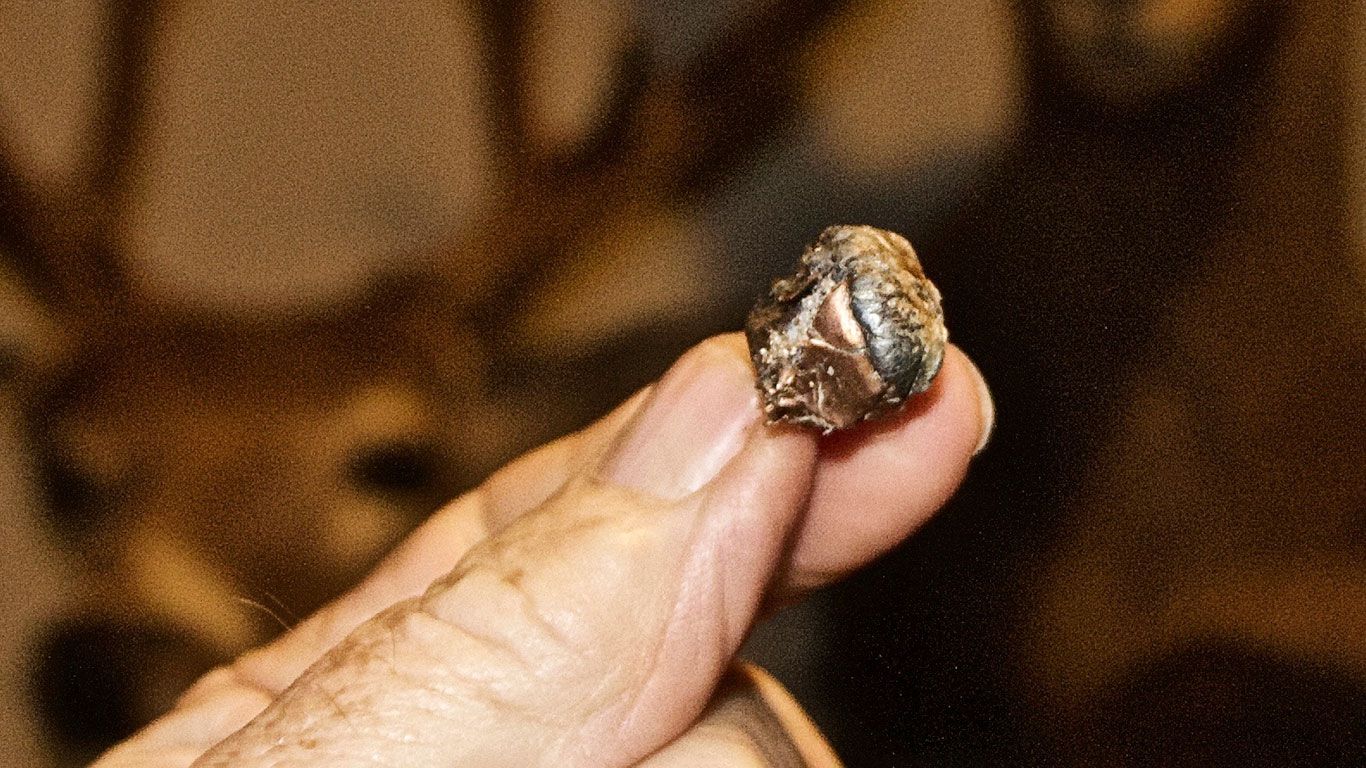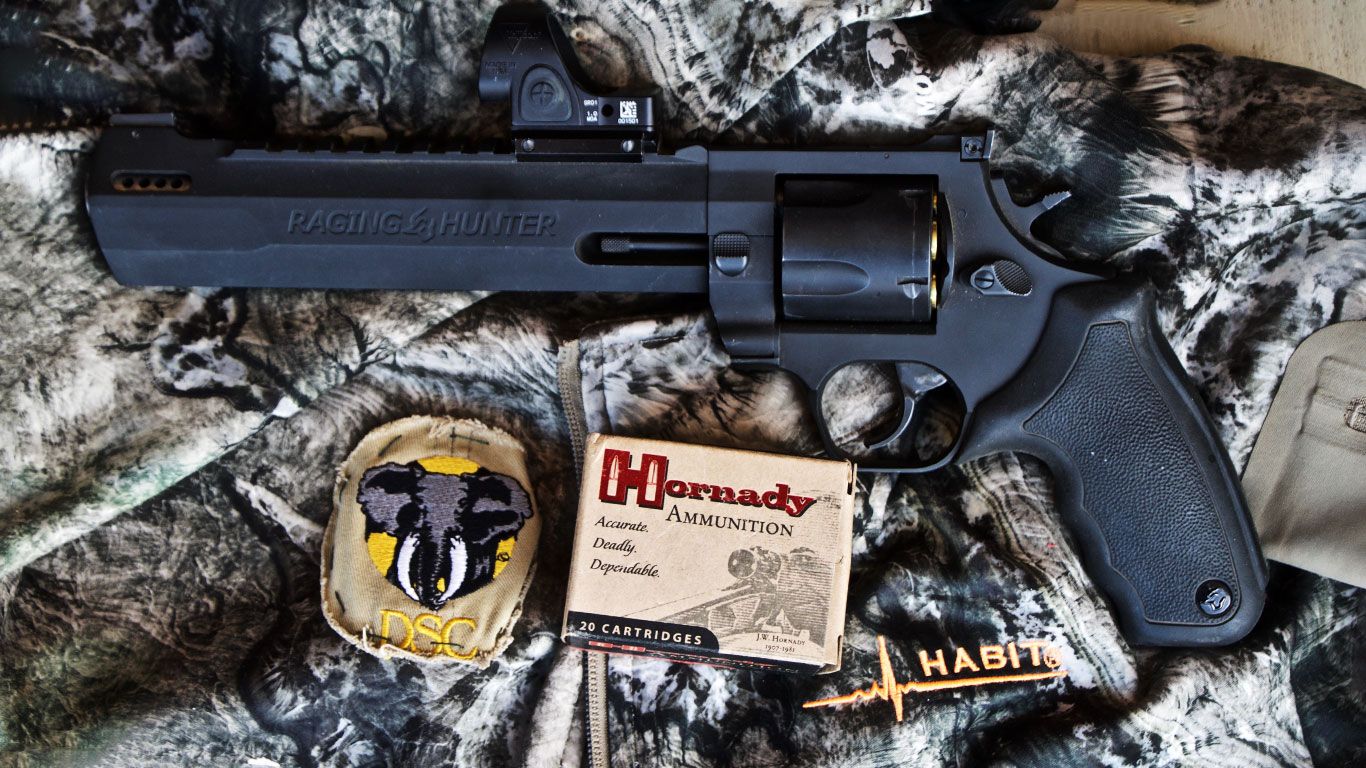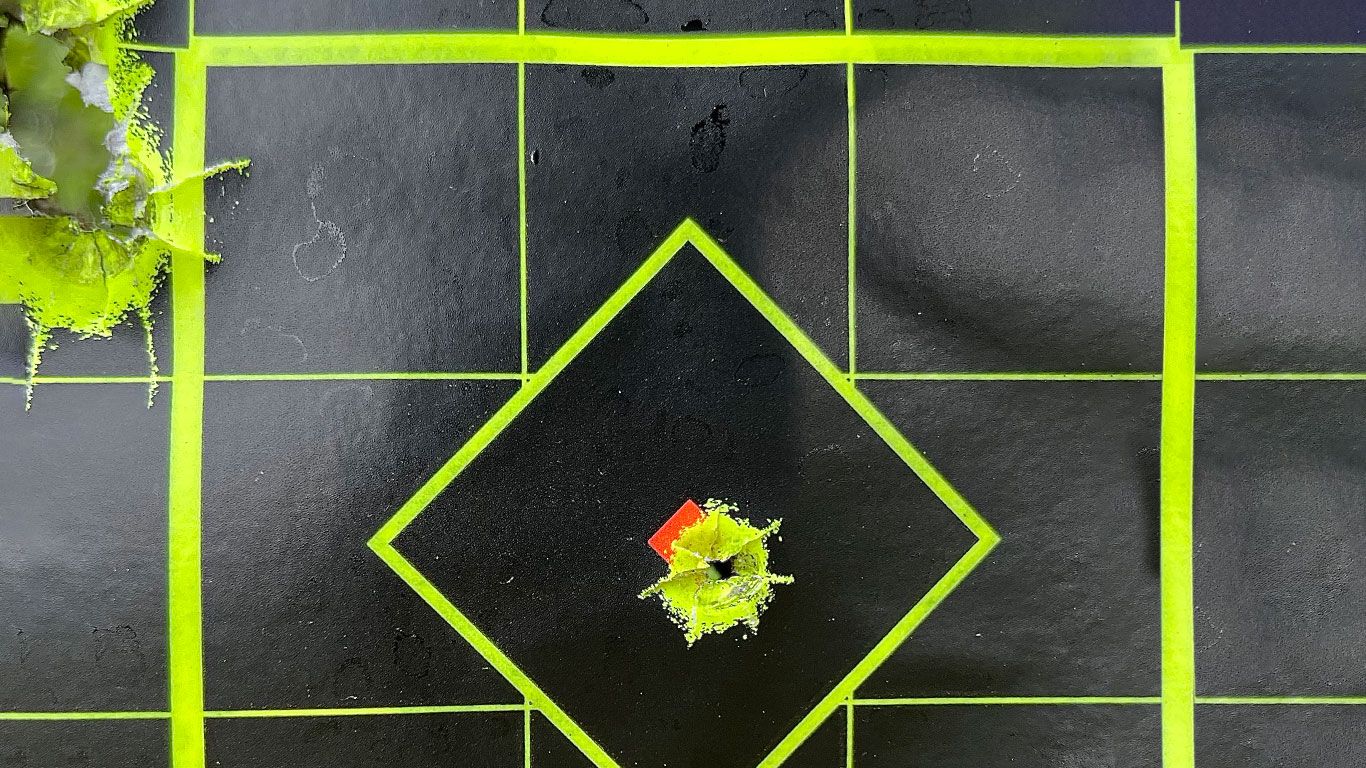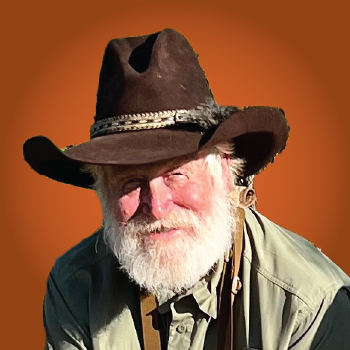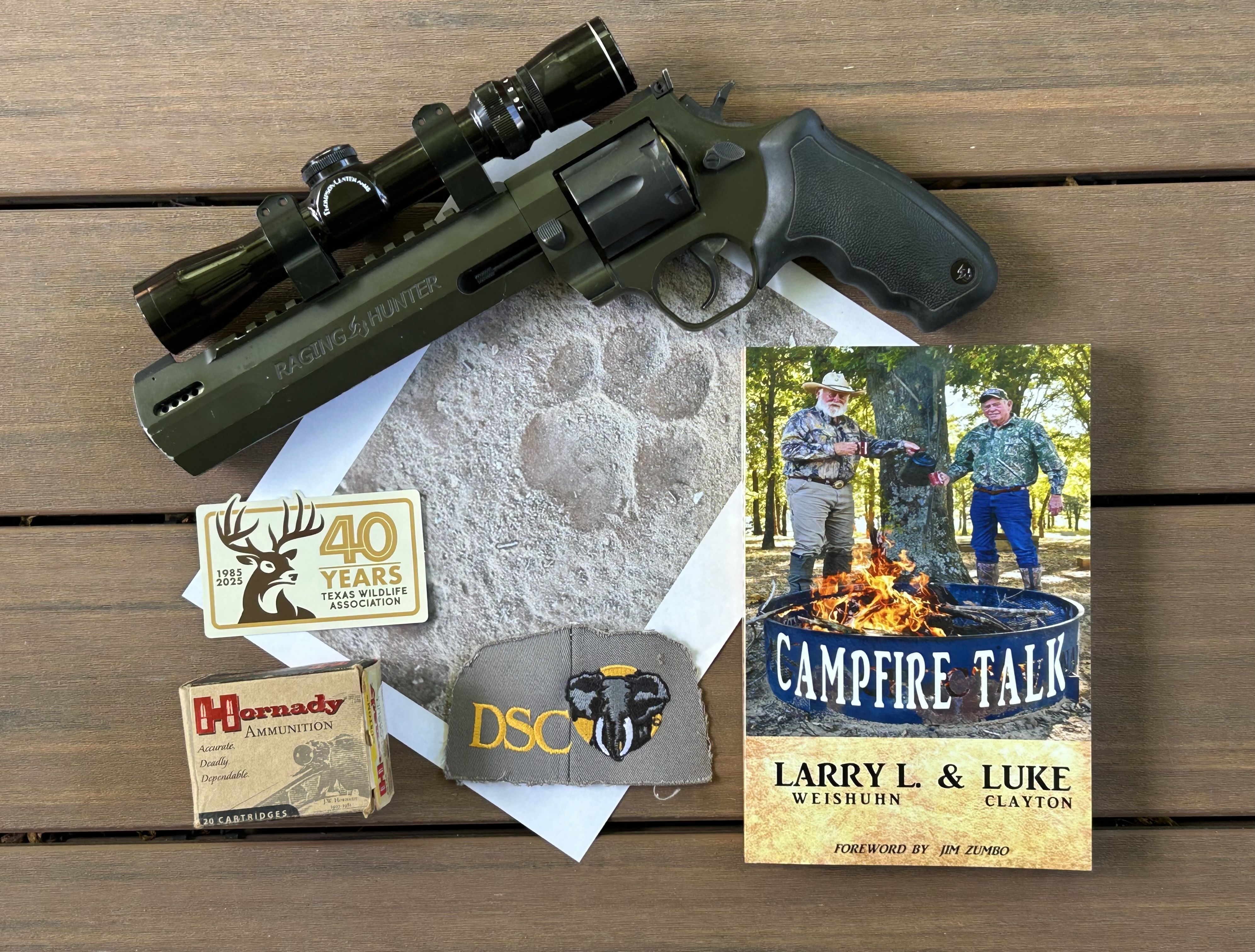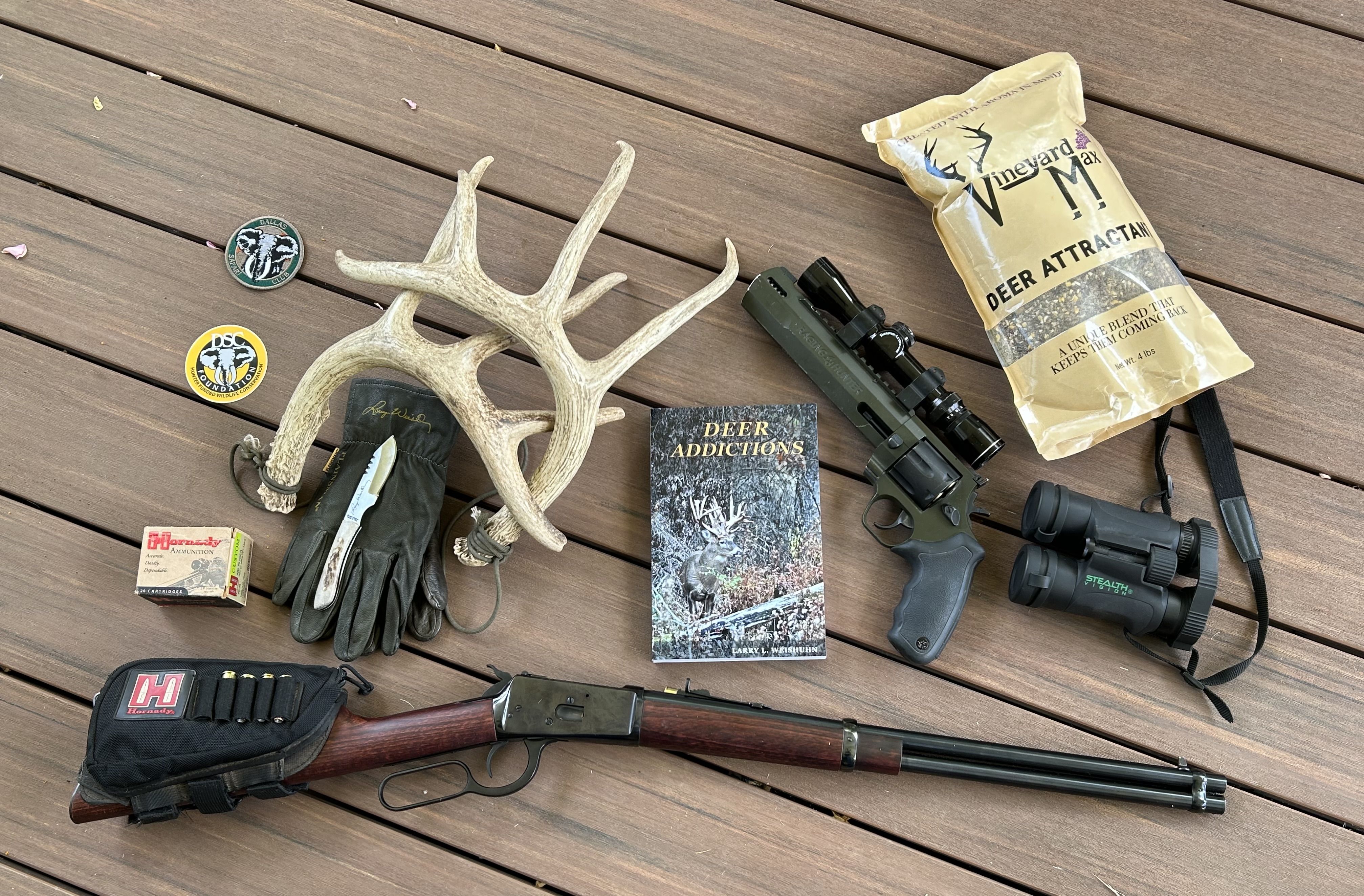The day had been a good one. All in camp had seen elk. A few bulls were still bugling. One six by six was down, and would be packed out of the mountains in the morrow, after being hung to cool high in a pine. Supper had been delicious, resplendent with cherry and blueberry pies for dessert. Satiated, hunters and guides were drawn to the camp’s fire. Conversation started with the day’s doings, then drifted to other topics regarding guns, calibers and cartridges.
“Larry, what do you consider the purpose and responsibility of a hunting bullet?” asked the bearded guy wearing bib-overalls and an Alabama-styled brim ball cap, sitting across from me behind a screen of campfire smoke.
He had sat quietly taking in all things during our elk hunt campfire discussion about choices in hunting calibers and rounds. I had noticed when we checked the zero of our rifles, he was shooting a .338 Win Mag, an excellent choice for elk. He handled his rifle with care and safety, then placed two bullets nearly in the same hole 2 ½-inches above the bullseye. His scope was an early Trijicon AccuPoint, his ammo Hornady’s 200-grain SST. I knew his choices to be accurate, hard hitting and capable of doing considerable tissue damage. I had used the same ammo in a .338 Win Mag Remington Model 700, with a fancy Fajen wood stock. I carried it throughout the world as my back-up rifle. At the time I was on staff with various shooting and hunting publications. On every hunt I used a different rifle. I carried the .338 Win just in case the rifle I was hunting with at the time had problems…
I have sold very few personal guns other than to close friends. In a weak moment I had sold my .338 Win Mag to a friend headed to Canada on his first moose hunt. Unfortunately fate intervened, he contracted a rare form of pneumonia and died two months before his trip. Unfortunately, all his hunting rifles disappeared three days after his death. Surely do wish I had that beautiful and accurate rifle back in my gun safe.
Before answering his query, I poked at the coals of the warming campfire sending a spray of embers skyward, offerings to those above. It gave me the chance to think while everyone gazed at the skyward embers.
“To me, the purpose of a bullet is to be accurate for proper shot placement but with sufficient down range energy to quickly and humanely kill the animal. Once the bullet enters the body it should cause and create a substantial wound channel, along with traumatic damage due to hydrostatic shock, immediate tissue damage, resulting in rapid blood loss. A bullet should cause death as immediately as possible.” I stated. The questioner nodded.
“Do you want a bullet that fragments, or stays intact and mushrooms?” he followed up with a second question.
“I want my bullets to remain intact, but mushroomed, at least doubling in size from the initial diameter of the bullet. This helps create more hydrostatic shock and a larger wound channel. But I also want a bullet which will penetrate through a reasonable thickness of bone, if I have to shoot through the scapula and ribs. I want my bullet to break a rib, do considerable tissue damage to heart and lung, travel through a rib and break the front side or offside shoulder, depending upon the shot’s angle.” I explained.
“Interesting..” said he. “Do you want your hunting bullet to stay in the body or exit?”
Somehow I had known that was where we would end up sooner or later. I considered throwing the question right back at him, to determine his thoughts. Obviously, he had a fair amount of hunting experience, based on his questions and how he asked them.
“As you’re aware there are essentially two schools of thought regarding bullets staying in the body or exiting. There are those who want their bullet to expend all its energy in the body of the animal and remain there, and, those who want the bullet to do considerable tissue damage within the body and then exit, creating two places for blood to leak from, making for an easy blood trail to follow.” I said, then hesitated to look around the fire to see the facial expressions of those sitting around the fire.
“My intention whenever I pull the trigger at an animal as mentioned, is to kill it as quickly and humanely as possible. When hunting big game, meaning from deer on up, I am first of all a firm believer in “using enough gun”. To me, there is no such things as too much gun, being over-gunned, or over-kill!”
“I use controlled expansion style bullets, those which expand as the enter the body, do tremendous tissue and bone damage. If the bullet exits on the opposite side, having expended most of its down range energy within the body, I’m happy, but also if I find the spent bullet just under the skin, opposite of the side I shot. Shot placement is always paramount. That’s why its imperative to know the anatomy of whatever species you hunt.”
“I do like to recover spent bullets to see how they performed. That’s why I often fire second shots at the animals even when they are down at an angle where there is a good chance I will be able to recover a bullet. With every animal I shoot or have shot, I do my own gutting so I can see what the bullet did, its terminal performance and possibly recover a spent bullet. The exception has been in African hunting camps where the PH insists his staff gut and care for capes and carcasses. Even there I try to be present when the animal is gutted and skinned.”
“To specifically answer your question. I don’t really like following blood trails. My preference is for the animal to go down immediately or within sight. Of course that does not always happen. I have followed many blood trails, including when having outfitted and guiding others. It is nice to have blood leaking from both sides. But that said, there are also those who want blood to accumulate in the thoracic cavity, which suppresses breathing.” I continued.
“My advice is always, if you shoot an animal, reload as quickly as possible and if there is any movement shoot it again! Do not shoot, then admire your shot. Shoot, reload and immediately get back on the animal! It’s better to lose 6 to 8-ounces of meat from a follow-up shot than losing the entire animal, because it got up and ran away! Numerous times I have seen a hunter shoot an animal, it goes down and he or she turns to high-five those with them, or unloads the spent case and does not reload. Quite often when they do, the animal gets up, runs away, and is seldom recovered, or recovered considerably later. Celebrate your shot and good fortune with friends when the animal is hanging on the meat pole, not before!”
I glanced around the campfire. Those seated there nodded in agreement especially the one who had asked questions.
I reminded them I frequently hunt with handguns, specifically Taurus Raging Hunters chambered in .44 Mag, .454 Casull and .460 S&W Mag. All are topped with Trijicon SRO 2.5 MOA red-dot sights; shoot 240-grain XTP Hornady Custom in my .44 Mag, 240-grain XTP MAG Hornady Custom in my .454 Casull, and 200-grain FTX Hornady Custom in my .460 S&W Mag. In my Mossberg Patriot .270 Win, .30-06 Springfield and 7mm PRC hunting rifles topped with either Trijicon AccuPoint or Huron scopes, I shoot Hornady Precision Hunter ammo using their ELD-X bullets, or in some instances Hornady Outfitter using their CX bullets. To me Hornady’s Precision Hunter is the finest ammunition I have ever shot in terms of accuracy and terminal performance. I have used it on animals in North America from elk on down. I primarily hunt with the Hornady Outfitter ammo, which uses their monolithic copper alloy bullet, when hunting where lead is no longer allowed. I have also used it on big wild hogs, whitetails and mule deer in Texas with great success.
In my handguns, I have long used Hornady’s 240-grain XTP handgun bullets, and, have done so with great success on animals as large as Alaskan brown bear and elk down to whitetails and varmints, as well as on Africa’s plains game. My handguns shoot those bullets and loads extremely accurately. And in my experience their terminal performance is second to none.
Back around the campfire, “Something I do when shooting a second shot, even if I think the first shot is going to be deadly, is place my second bullet into another part of vitals to create a second, large wound channel. I occasionally hear where a hunter shoots a second time then brags about that shot being almost in the exact place as the first. This really accomplishes little in terms of creating a second wound channel. It is better to place a second bullet into the vitals in a different location, a little way from the first shot. This creates another major wound channel.”
From behind the outfitter spoke loudly, “Y’all might want to resume this discussion tomorrow night. Best get to bed. Coffee will be on at 4 a. m. in less than five hours!”
